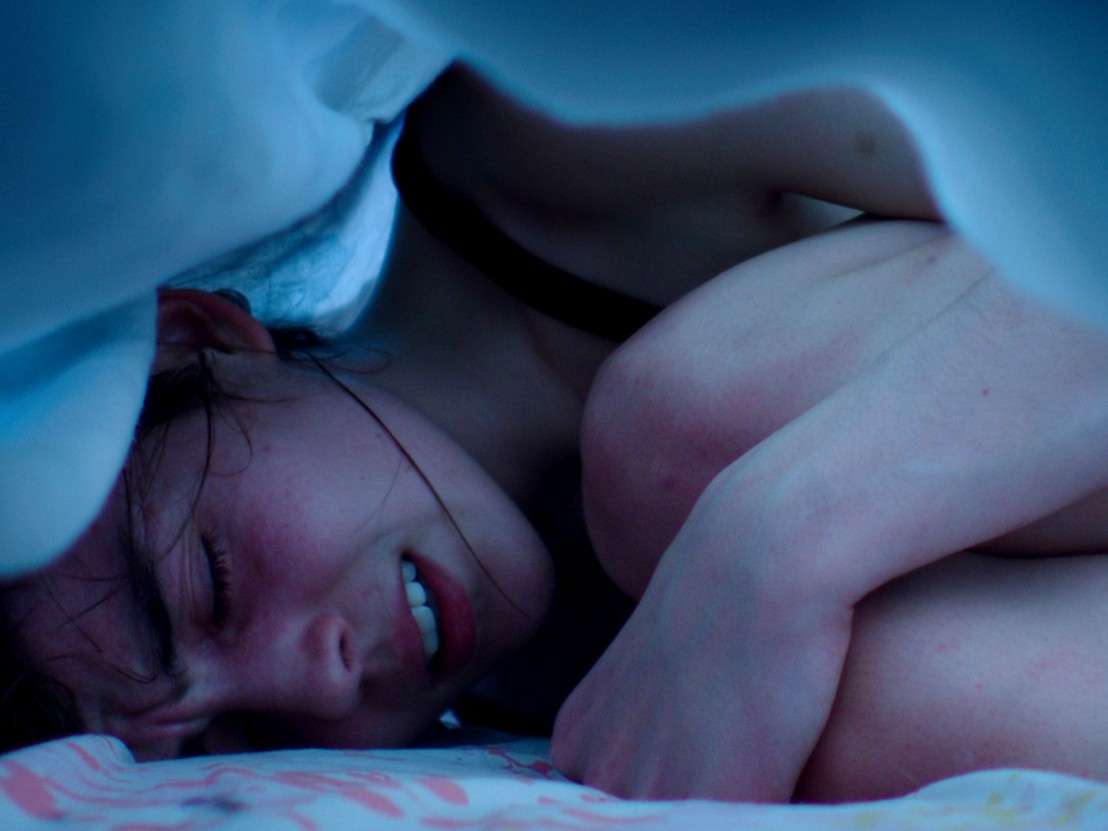
Contemporary teen horror is creepy because it isn’t trying to be. It bypasses the dated techniques and affectations of cheap jump scares, un-ironic camp and the ancestral fear of ‘the other’ while challenging perceived wisdom concerning the adolescent experience. Simultaneously craving the attention, drama, stimulants and sarcasm it wants so desperately to dismiss, this new wave of horror is far more disturbing for how easily it mirrors our own lives, and for how blurred the border between reality and fantasy becomes.
The fear and the violence seeps in slowly, subversively and at times satirically. But just to be clear – it’s not all slow-burn mind games. Generation Z horror is still of the flesh. It won’t hesitate to summon buckets of fake blood and Hollywood-grade special effects to execute its plot (however ironic the delivery may be). Yet the terror isn’t happening in remote cabins in the woods, evil villains’ hilltop bachelor pads or Tudor-era haunted mansions.
Rather, it unfolds in everyday locations: quietly possessing our unassuming suburban streets, stalking the nooks and crannies of our inner-city project housing, grooving in the shadows of DTLA’s thumping, neon-soaked nightclubs. It’s snuck into drinks at frat parties on college campuses and casually deposited between seedy bathroom hook-ups. From retromania to missing parents, consumer culture to subversive self-awareness, here are the trends currently defining contemporary teen horror.
The first and perhaps clearest hallmark of Gen Z horror is the absence of parental or guardian figures: a sort of metaphorical incantation of the glowing screen alight with messages underneath the dinner table. Of course, the obvious setting for new-age horror is a college campus – as a carnival of novel encounters, a jumbled, half-remembered assemblage of non-academic illuminations.
Julia Ducournau’s Raw plays into the absolute extreme of this effect as a series of firsts: the unassuming, straight-laced Justine (Garance Mariller), born and raised by a quiet family of strict vegetarians, enters into a veterinarian school to follow in her family’s footsteps. From sibling rivalry to Brazilian waxes to hazing rituals involving raw flesh, Justine’s first term unleashes a flood gate of carnal exposure that gets its kicks from a lack of supervision, with parents long gone and professors notably absent (in fact, in-class scenes are almost as rare as the meat).
Elsewhere David Robert Mitchell’s It Follows and Michael O’Shea’s The Transfiguration offer a different take via a Parent Trap approach, with the bulk of hysteria occurring in the realm of the domestic, its heralds having disappeared. Their absence gets a poetic nod in It Follows, with Mitchell’s camera doting upon the immaculately-staged childish bedroom sets of Jay (Maika Monroe), and complete with plenty of family portraits lining the stairs.
The Transfiguration makes the absence of parents a central, literal (i.e. they are dead) and politically-charged plot point. With its outsider protagonist and wannabe vampire Milo (Eric Ruffin) living in a derelict public housing complex in New York with his older brother Lewis, an ex-army veteran and surrogate guardian. Though Milo’s standing as a “true” vampire is never really answered, one does wonder whether the chain of human deaths unleashed by his blood hunger could have been avoided were the poverty and tragedy outlining his youth somehow vindicated.
For the generation that weighs social capital in ratios of followers-to-following and blue-coloured text bubbles yet will probably wear vintage mom jeans to their graves, the fetish for a retro-future receives an empathetic lean-in from a likeminded audience. Gen Z horror has nestled into the ambient dreamscape framing our own patterns of consumption: that sweet spot in between Instagram-worthy California sunsets, heart-to-hearts on the rooftops of college buildings and the tender, teetering pubescent rush of car dates on the beach.
It is catalysed through an instantly empathetic love of anachronism, exposing the hypocrisy of our own fetish for often-inexplicable bouts of retromania, where the rise of Instagram culture is built on the scaffolding of the polaroid revival; where astrology only trends further the more Smart technology can tell us through incessant monitoring of our bodies. This fetish for the old-fashioned is taken to extremes in It Follows, where Mitchell literally invents his own technology to elude dating (a clam-shell shaped e-reader on which nerdy Yara religiously reads Dostoyevsky). This plays out more liberally across the sub-genre, with a strong-armed ’80s neon aesthetic to complement (or conspire against?) the brutalism of consumption, as in Nicolas Winding Refn’s The Neon Demon.
Gen Z horror is not so much concerned with terror, violence and trauma point blank as it is with the forces of consumption culture that surround it. More than anything, films like Raw, It Follows and The Neon Demon reveal that our relationship with narcissism and consumption is complex. Lambasted for its literal interpretation of consumerism and body capital, these films are ultra-effective in that the very criticism they solicit reveals a crucial truth about our own culture.
Gen Z rocked up pimply-faced and hormonal in the dog days of neoliberalism, and is coming of age now in an era of post-capitalism, where we’ve swallowed the glitter pill of material excess and anxiety and are just now waking up to recent history’s worst hangover. It’s a tale of two worlds: we want to look good all of the time, but we also hate that culture; what Gen Z sees as a force of empowerment is seen by the baby boomers as a self-indulgent and despicable vanity fair.
Both on-screen and IRL, there exists a constant competition between self-awareness and self-indulgence. Teen horror today reveals a shift of the superficial into the realm of commodification; self-image has become something substantial, as violent as it is powerful. Contemporary teen horror moves freely across typologies – from vampires to cannibalism to stalkers, horror has perhaps never been as diverse as it is now. It proves that our own consumption culture can be as vengeful and as deadly as any supernatural force or spiteful demon, and perhaps even more disturbing, because it lives inside of each of us, a cyclical subject and effect of our own insatiable hunger.
Published 10 Jun 2017

Michael O’Shea’s The Transfiguration builds its fantasy before shattering it with real-world adult truths.

With The Neon Demon the Danish writer/director has made his most provocative film yet. We travelled to Copenhagen to meet him.

By Katy Vans
Karyn Kusama and St Vincent’s Annie Clark are among those contributing to an all-female anthology film.